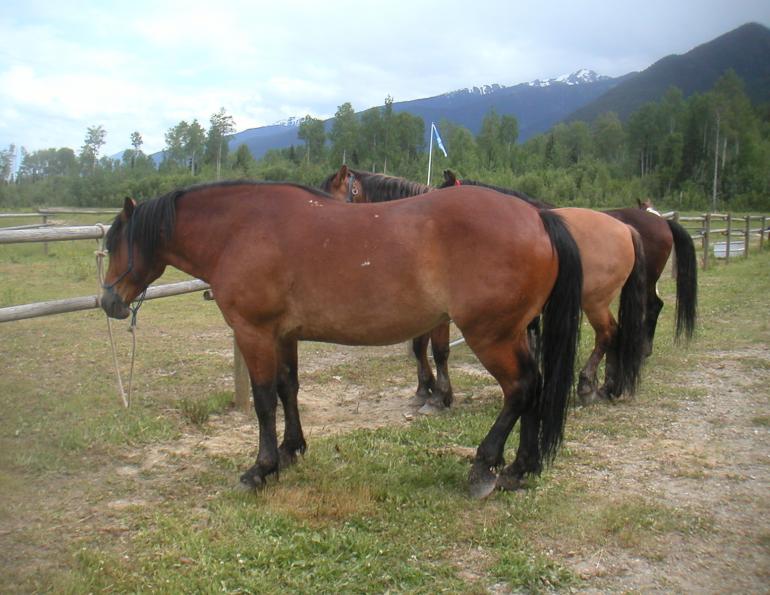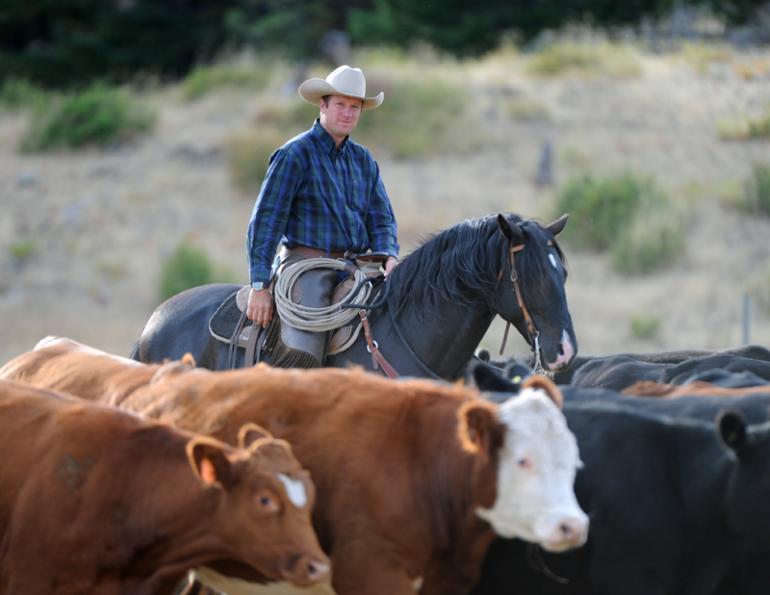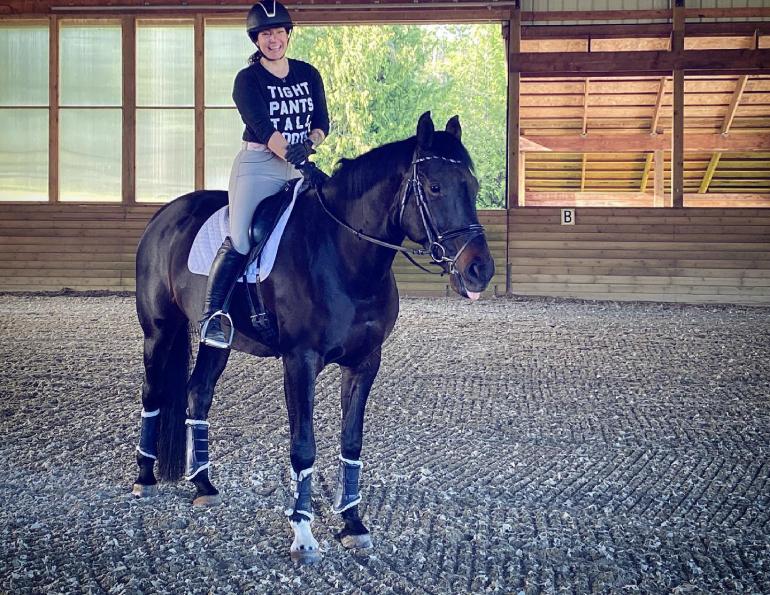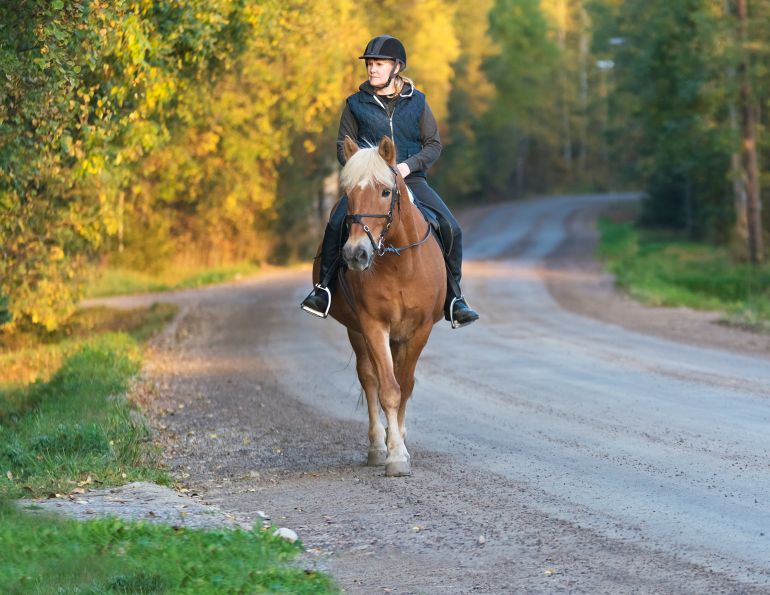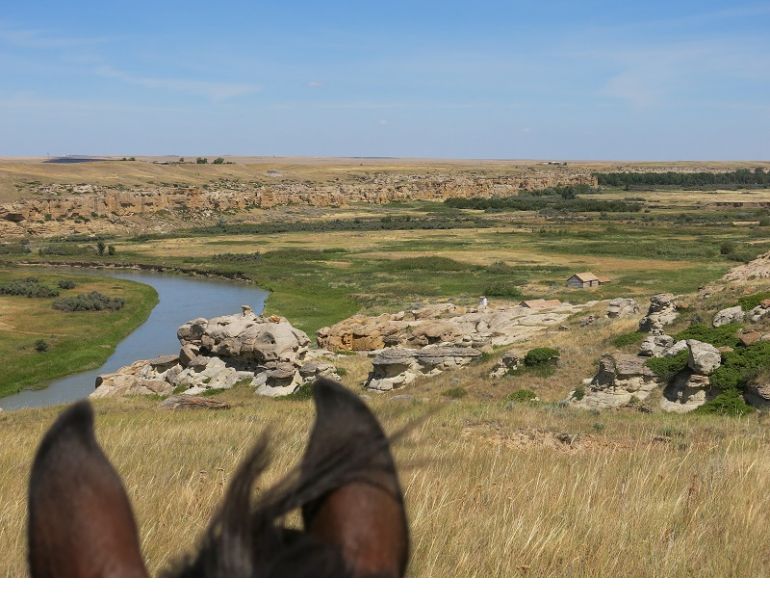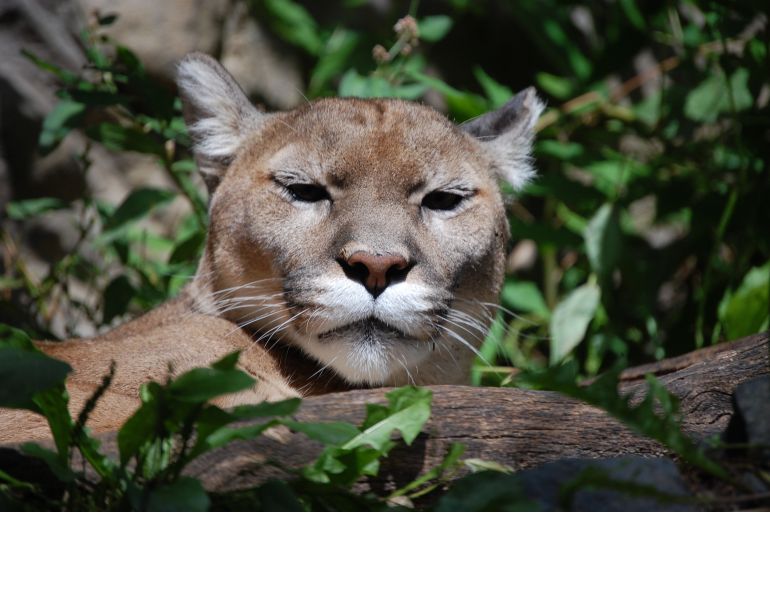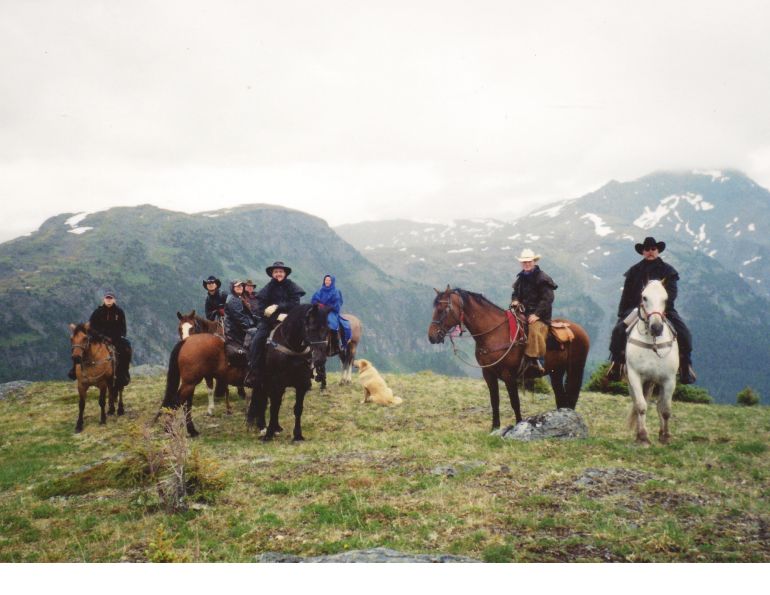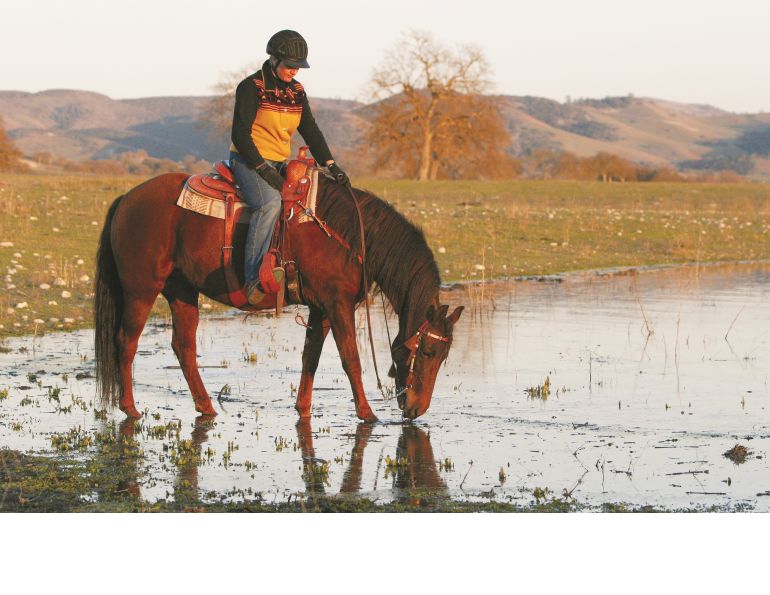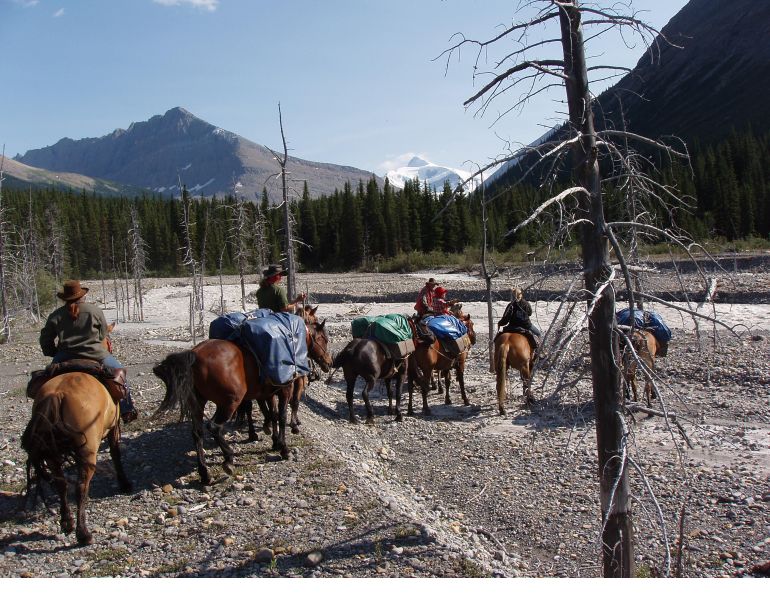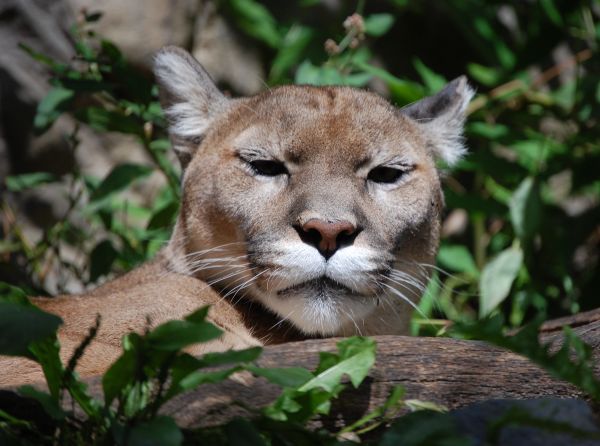By Stan Walchuk, Jr.
There was a time when I would not have an ugly horse on my farm. I thought there was money to be made selling purebred horses and if I was going to feed a horse anyway, it may as well be a pretty purebred.
My family settled on Morgans and I am still glad they did. During those years we believed the common notion that our horses had to look better than the next guy’s if they were going to sell. They should have swan necks, sweet eyes, lips to kiss, and be able to dance like a princess. For years we did not have an ugly horse, until I decided that I preferred the wilderness to the arena rail. Slowly but surely our horses got uglier and now I worry that they might be too ugly!
With experience behind us, we began looking for certain qualities in our trail horses. Our horses did not get uglier by accident; looks were simply not on the top of our Wanted list. When you are out there on the trails navigating timber, mud, and streams, it quickly becomes clear that beauty truly is in the eye of the beholder.
What do we look for in trail horse conformation? The quality of the foot has been discussed in a previous article and therefore this article will focus on other key aspects.
Bone
From an outfitter’s and trail rider’s perspective, bigger bone is generally a good thing. Riding over rough, rocky, muddy ground with heavy loads can be a punishing activity. Bigger bone means bigger joints and tendons. Joint problems are often the result of tendon issues.
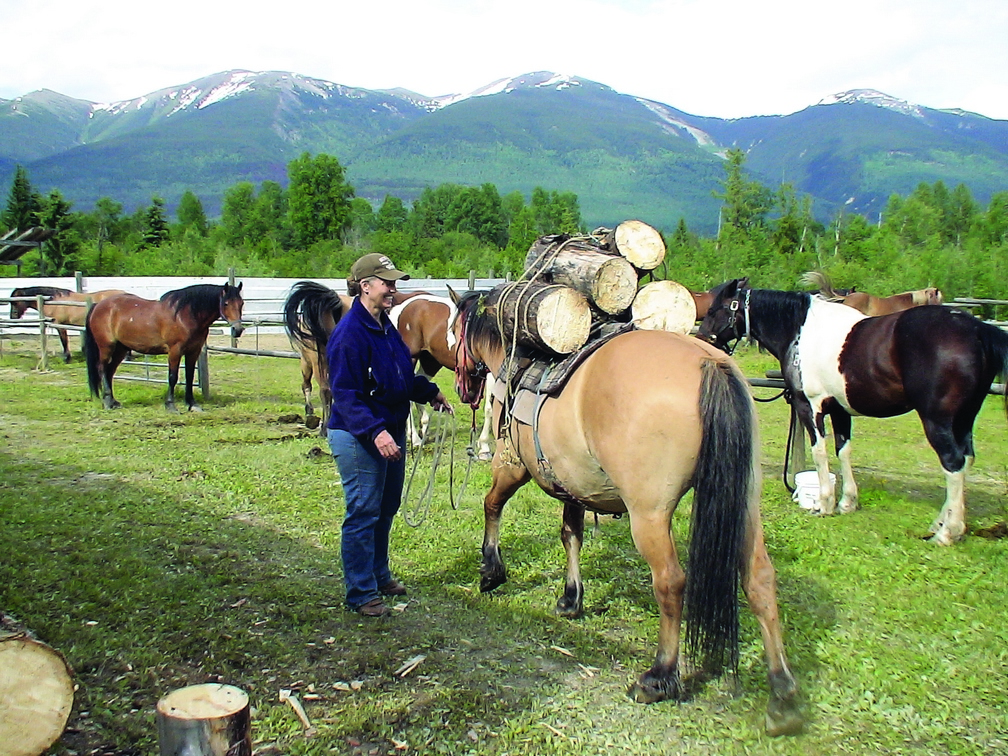
Good bone, short pasterns, and average withers are a benefit to a horse needed to carry heavy loads over rough ground. Photo: Courtesy of Stan Walchuk, Jr.
Because of this, I am convinced that the longevity of a trail horse is directly related to the quality of bone, joints, and tendons.
Obviously, a small rider does not strain the horse as much as a large rider does, so a sturdy draft cross with a child rider would have less chance of injury unless the horse doubles as an adult’s riding horse or a pack horse.
Not all terrain is created equal. If you ride on farmland or in forest and grassland, there is far less chance of strains and injury than if you ride up a rocky mountain stream or over a mountain pass. Always consider the conditions the horse will be working in.
If you breed, remember that a horse may change hands several times during its lifetime. As a breeder, I try to breed for bigger bone.
Breed and the Pasterns
Riders often wonder if the breed of horse or the conformation of the leg affects durability, and I am certain that it does. I have ridden horses with medium to stout pasterns with less slope, a quality often associated with draft or pony breeds and some Quarter Horses, Arabians, or Morgans.
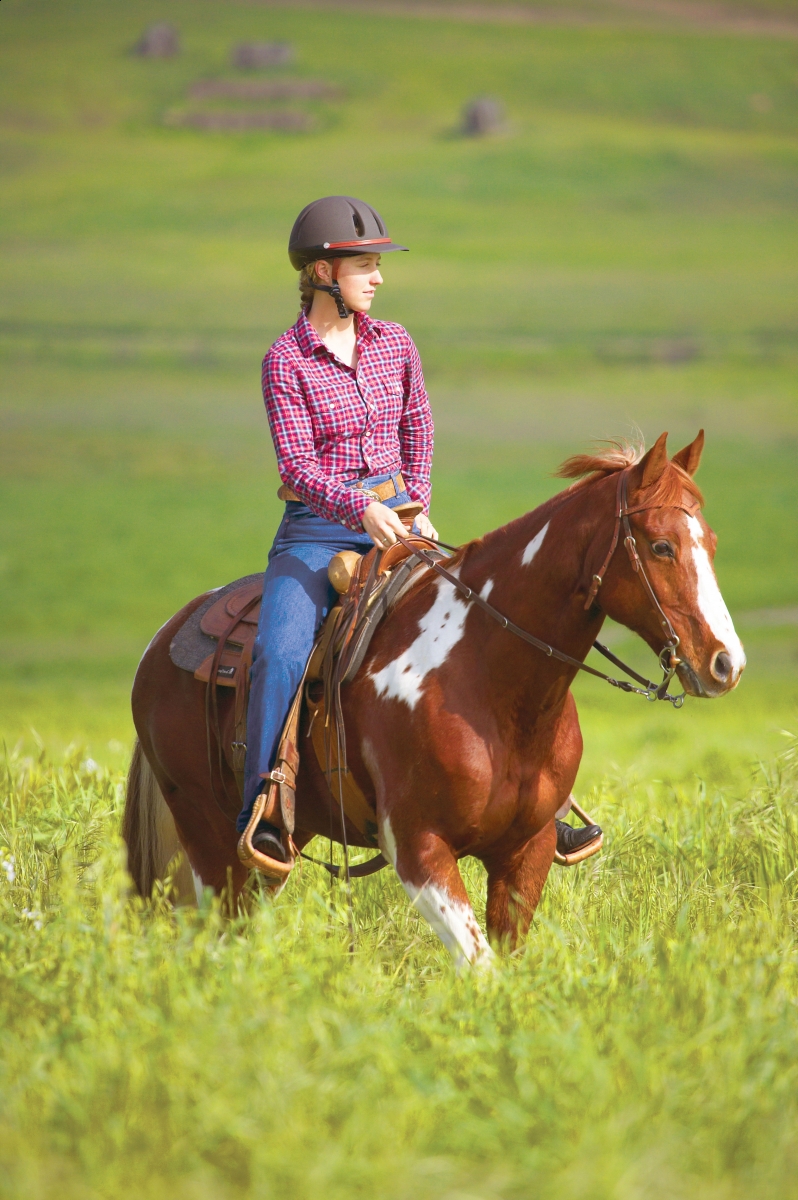
The type of trail you ride will influence the conformation you need in your trail horse. Farmland, grassland, and forest trails will put much less strain on a horse’s body than mountainous, rocky terrain. Photo: Troxel
I have also ridden horses with the long, highly sloped pasterns often associated with Thoroughbreds or Warmbloods. There is a notable difference both in how these horses handle themselves in difficult terrain, and in the strain on their feet in rocky, foot wrenching ground. Although the highly sloped, longer pastern may mean smoother riding and more comfort in the arena, this quality is not as durable on the trail as a stout pastern with less slope.
You will generally notice less stumbling with a stout pastern, but depending on the type of riding you do, you may appreciate the smoother ride of the Thoroughbred or Standardbred.
Some experienced horse people believe that certain breeds offer tougher joints and bone. There may be something to this theory when you consider the breed’s history. For example, proponents of the Morgan horse will tell you that the Morgan has a tough leg and foot from many years of breeding for use as a carriage and pulling horse, whereas less attention has been given to leg toughness in the flexible athlete of the horse world, the Quarter Horse. Veterinarians have told me that they see many more Thoroughbreds and Quarter Horses with foot and leg problems than they do Arabs or Morgans. I have owned wonderful trail horses from all of these breeds, and believe this to be true.
Back Length
Let’s consider the horse’s coupling and back length. I don’t see any real benefit to a horse being either overly short-coupled or long-backed. Long-backed horses tend to develop sway backs (and high withers) earlier than shorter backed horses and generally do not keep their weight as well as shorter backed horses. In my opinion, these horses don’t navigate tough terrain as well as shorter backed horses, similar to the way a four-wheel-drive vehicle with a very long wheelbase navigates compared to a four-wheel-drive vehicle with a shorter wheelbase.
With a large rider on a 16 or 17 inch Western saddle seat on a very short-backed horse, the saddle comes nearly to the horse’s rear quarters. This is not the best position for the rider’s weight on the horse’s back. You may have heard about kidney damage with a short-backed horse because the rider’s weight is further back, or from overloading saddle bags. Although it is never a good idea to overload saddle bags, I personally have never had a horse with kidney damage because it was short-backed, and we have had many short-backed horses.
The smoothness of the ride is due to several factors besides back length, including the horse’s natural gait, shoulder slope, size relative to the hindquarters, and the pasterns. Once in a while, a horse defies all odds and looks like a Jeep but rides like a Cadillac, and vice versa.
Wither Height and Holding a Saddle
Look at the withers on your prospective trail horse. Often, a good horse with high withers means that extra effort is needed to find a saddle with a high gullet, and thicker padding and cutouts must be used in the wither area. Personally, I do not want to bother with this extra effort. Over the years we have bred horses with good average withers and bought saddles to suit the majority. Often, very high withered horses have not been the best choice anyway because they were older or they were leaner and hot blooded, which is not the best choice for a trail horse to begin with.
Conversely, a mutton withered horse – a horse with little or no withers – can be a real problem for trail riders simply because there is not enough wither there to secure the saddle or the load. On the trail, where you are balancing, flexing, and jostling in all directions, both you and your horse need a saddle that fits properly and reduces the motion. A flat-backed, low-withered horse exaggerates that motion, even if the saddle is designed for a flat-backed horse. Many riders have slid, skid, and bounced to the ground because the saddle slipped on a flat-backed horse.
Some horses are known for having their saddles or packs slide over their necks when moving downhill. A low-withered horse has little to stop this motion. We have a faithful packhorse, Danny, who somehow encourages his entire load to slide over his neck and head, onto the ground. Then he stands patiently with the load over his head, like an ostrich with his head buried in the sand, waiting for help. A crouper would solve the problem, but sometimes months go by and he fools us into thinking he doesn’t need one.
For less saddle slippage, ease of using saddles with a common tree size, pack saddle stability, and less potential for soreness from a shifting load, the trail horse needs some withers.
Sometimes horses with little wither are simply too fat and, with controlled feed and increased exercise, surprisingly good withers may appear within a few weeks.
Muscle
Several breeds of horses, including Arabians, Tennessee Walkers, and Morgans, have leaner muscle which is well suited to long days on the trail. However, longevity and muscle power are needed to push up steep slopes, through mud, up banks, and to stabilize loads in swift water. Therefore, some muscle is good, particularly in the upper leg areas of the gaskin and stifle.
Size
The size of your trail horse is mostly a personal choice. Some people like the feel of riding a tall horse; others prefer to be closer to the ground. Personally, I like the sway of a taller, smooth riding horse, particularly on long days.
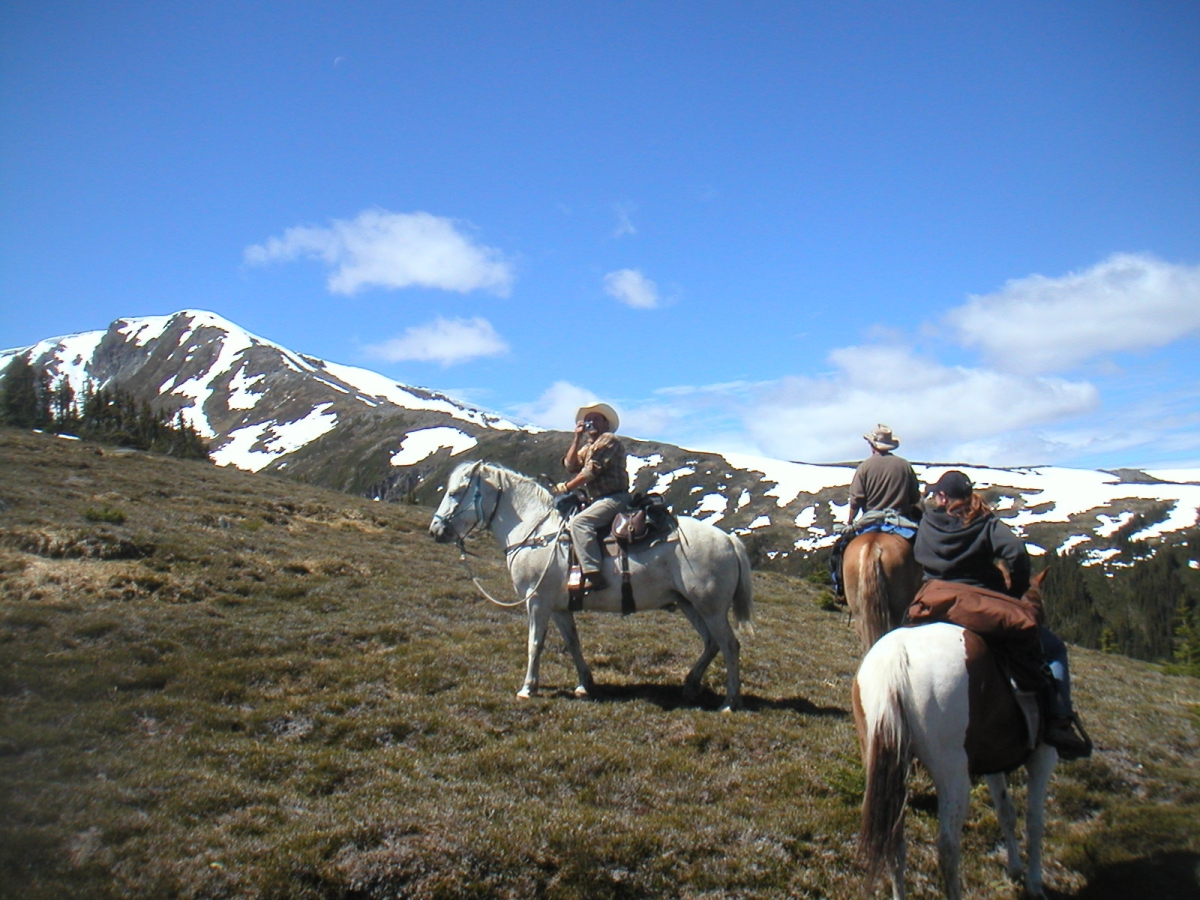
The size of your trail horse is a personal preference. Very tall horses have both advantages and disadvantages on the trail. In general, an average sized horse between 14.3 and 16 hands high is most suitable. Photo: Courtesy of Stan Walchuk, Jr.
If I have to make some long miles on a long day, I choose a tall horse.
On the other hand, I don’t like to have to search for a stump to mount from, or have four big horses fit into my horse trailer instead of six smaller ones, or have to pack a 17 hand horse day in and day out, so I usually ride a sturdy horse that is between 14.3 to 16 hands high. A durable 15 hand packhorse is more user friendly for the average Joe than one that stands 17 hands.
If you cross many streams and rivers, a tall, sturdy horse has a definite advantage due to having less water push against its sides, and being more adept at navigating slippery, big stream boulders. Always take kids off ponies when crossing streams and place them on sturdy, full sized horses.
I would venture to say that in the long run, an average sized horse is safer than a tall one for daily use and pack trips.
Neck
Many riders in the performance disciplines know the advantages of a long neck and fine throatlatch, and may relate that need to a soft turning trail horse. Although it would not be a disadvantage to have a fine throatlatch on a trail horse, trail conditions do not really demand it. Turning left, right, and back originates from a soft mind rather than from a fine throatlatch.
The softest, easiest turning horse I have ever owned was a very stout-necked Fjord gelding that I purchased in Smithers, BC. This horse was a thing of beauty, a Porsche in a delivery van body. He made me a believer in the art of groundwork and the truism, “Don’t judge a book by its cover.”
Conformation Concerns
There is sometimes controversy over conformation faults because what is considered a conformation fault in a racehorse may not be perceived the same way in a horse used for driving or work. Let’s look at some conformation faults that may concern trail riders.

When choosing a trail horse, avoid conformation faults such as a long, roach, or sway back, highset neck, shallow chest, asymmetrical or pigeon toed feet, or legs that are base narrow or back-at-the-knee. Photo: Courtesy of Stan Walchuk, Jr.
We have talked about a long sway back being weaker, and long sloping pasterns being less durable for rugged trail riding. I consider both to be conformation faults in trail horses when taken to excess. In addition, a roach back – a back that bows up, opposite to a sway-backed horse – may be more difficult to fit with a saddle and more susceptible to back problems.
A ewe neck – a neck that dips as it leaves the shoulders – is considered an imperfection, but a slight ewe neck does not have as much bearing on the trail horse as does the slope of the shoulder. A well sloped shoulder is generally smoother to ride than an upright shoulder.
A high set neck may look pretty, but many trail riders have been whacked in the face by an upright neck or head that came up too quickly. I have earned a few eye-watering, painful whacks myself and not always from high headed horses.
I believe there may be truth to the concept that a small chested horse does not have as much room for his heart and lungs and therefore is not as good an athlete as a horse with a deep or well sprung chest. Personally, I like to see a medium or wider chest on my trail horses, both for better wind and because a wider base is better in rough going. However, an overly wide chest on a base narrow horse, with feet coming close together on the ground, is a fault to watch out for. Mules are often narrower, but are generally very sure footed and their chests usually compensate by being very deep.
I consider front legs that are back-at-the-knees — knees that back under the forelimb — to be a weakness and a fault in a trail horse. I don’t consider a slightly toed-in or toed-out conformation to be a serious fault, but if the horse swings its feet out noticeably or is very pigeon toed, its stability under trail conditions is compromised. Cow hocked is another common fault, but many cold blooded draft horses are cow hocked and I don’t consider them any less sure footed on the trail.
“Wry foot” refers to a hoof wall that is not symmetrical. Often the side wall between the toe and the heel comes in to the point where it has a rolled under look. This can be genetic or result from a lack of proper trimming. I have one horse with wry foot and it is an extra effort to trim and shoe this horse properly, but if you plan to ride a wry footed horse you need to give it extra attention if it is to be a useful trail horse.
Conclusion
When looking at a potential trail horse, consider the conformation, strength, and hardiness your horse will need to do the job, rather than pretty looks or flashy movement.
Happy Trails!
To read more by Stan Walchuk on this site, click here.
Main photo: A good trail horse should have tough feet, good bone, shorter pasterns, an average length back, good wither height, well sloped shoulders, lean muscle, and good muscling on the upper legs. Photo courtesy of Stan Walchuk, Jr.



